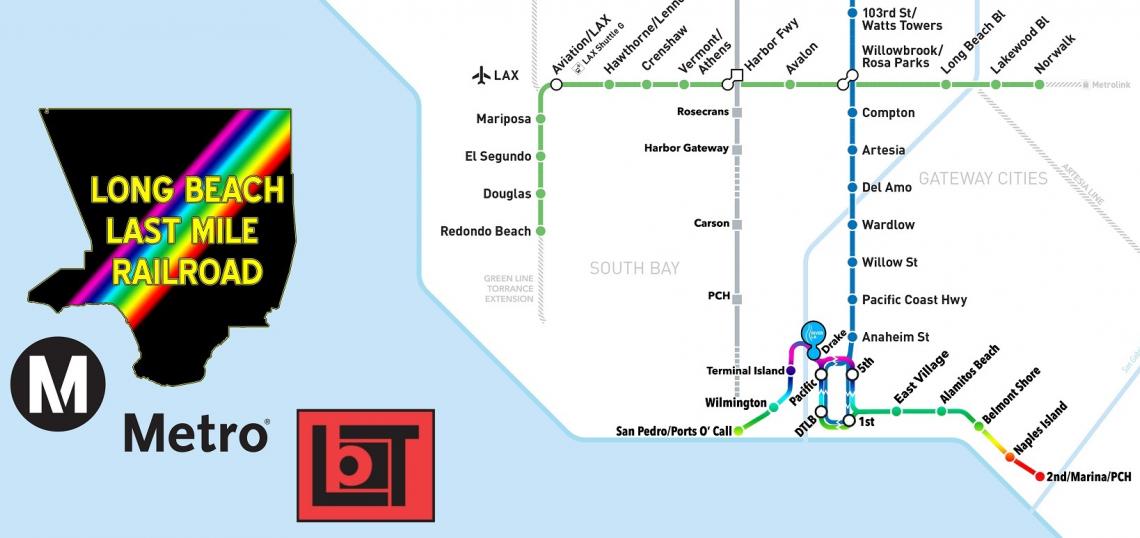Move over Downtown Los Angeles, you're not the only Southern California neighborhood with streetcar desires.
Long Beach resident Alex Barber recently put together a series of videos proposing an emission-free streetcar system for L.A. County's second largest city, utilizing existing Blue Line infrastructure and similar routes to those of the fabled Pacific Electric Railway. Barber's plan calls for multiple phases of construction, with a completed system that spans from San Pedro's Ports o' Call Village to Naples Island.
The streetcar network would be constructed as follows:
- Phase I: Starting at the Long Beach Transit Mall, service would extend east along Broadway towards Redondo Avenue.
- Phase II: At Redondo Avenue, streetcars would continue east via either Livingston Drive or 2nd Street before terminating at Bay Shore Avenue.
- Phase III: Service is extended west of Downtown Long Beach via new track along 7th Street before crossing the L.A. River and joining an existing rail right-of-way to the San Pedro waterfront.
- Phase IV: Tracks are extended east past Bay Shore Avenue to Naples Avenue before looping back to head west.
Barber argues that the proposed system could be built emission-free and without the use of visually obtrusive overhead wires by utilizing new technology from the French rail firm Alstom, which recently developed hydrogen-powered light rail cars for use in Germany. This system would only require construction of hydrogen fueling stations along the route, which could also serve hydrogen-powered automobiles.
According to the videos, seed funding for the streetcar system could be found via the local return allocations from the four L.A. County transit taxes: Measure R, Measure M, Prop. A and Prop. C. The four taxes bring Long Beach approximately $30 million annually, and could be coupled with other funding streams such as local return allocations from Los Angeles and parking enforcement revenue.
- Long Beach Archive (Urbanize LA)






